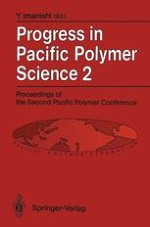1992 | Buch
Progress in Pacific Polymer Science 2
Proceedings of the Second Pacific Polymer Conference, Otsu, Japan, November 26–29, 1991
herausgegeben von: Prof. Dr. Y. Imanishi
Verlag: Springer Berlin Heidelberg
Enthalten in: Professional Book Archive
